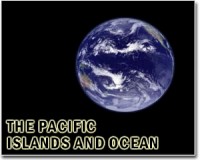| . |  |
. |
Paris (AFP) Jan 6, 2011 Experts pin the floods that have ravaged northeastern Australia on a weather phenomenon known as La Nina but are cautious whether the peril could be amplified by climate change. La Nina, or "girl child," is the counterpart of El Nino, or "boy child," together comprising a pendular swing of extreme weather that affects the Pacific Rim but can be disruptive as far as the coast of southern Africa. El Nino occurs when the trade winds that circulate surface water in the tropical Pacific start to weaken. A mass of warm water builds in the western Pacific and eventually rides over to the eastern side of the ocean. The outcome is a major shift in rainfall, bringing floods and mudslides to usually arid countries in western South America and drought in the western Pacific, as well as a change in nutrient-rich ocean currents that lure fish. Eventually, El Nino peters out, sometimes when a cold phase -- La Nina -- starts to dominate. At that point, the reverse happens: countries in the eastern Pacific face drier weather and those on the west, such as Australia's Queensland, get drenched. "2010 began with El Nino conditions in the Pacific followed by a rapid transition into La Nina during (the southern hemisphere's) autumn," Australia's Bureau of Meteorology says on its website. "(...) By July, La Nina conditions were well established and most areas of Australia experienced very much above average rainfall. The second half of the year (July to December) was the wettest on record for Australia." In the 20th century, scientists identified 25 moderate or strong El Ninos and 17 episodes of La Nina. The toll to human life and property, in droughts and floods, has sometimes been huge. The back-and-forth cycle -- formally known as the El Nino/La Nina-Southern Oscillation, or ENSO -- occurs every two to seven years. Because sea temperature plays such an important role, some climate experts are keen to determine whether man-made global warming might make it more frequent or vicious. Prudence, though, is the watchword. ENSO is a complex mechanism and reliable oceanographic data reaches back only a century or so, which is minute given that climate history spans billions of years. "There is no consistent indication at this time of discernible changes in projected ENSO amplitude or frequency in the 21st century," the UN's Intergovernmental Panel on Climate Change (IPCC) crisply announced in its Fourth Assessment Report in 2007. In an interview with AFP, Baylor Fox-Kemper, an oceanographer at the University of Colorado, explained: "Many models indicate that there is a link between El Nino and climate change, but they don't agree as to what that change should be. "Furthermore, El Nino is so noisy [a term meaning complex] that it takes many centuries of data to be sure that a change has occurred. "Since we have only a limited amount of trusted real-world data, we are unable to validate which of these models is closest to the truth." Others say that despite the unknowns, logic dictates that global warming is bound to have an impact on ENSO. "With a warmer world, one would expect the atmosphere to hold more moisture, so that when it does rain, it is heavier," said New Zealand specialist Jim Salinger. "So La Nina rainfall events are expected to be more intense... (although) at this stage, it is not known whether La Nina events will become more frequent."
Share This Article With Planet Earth
Related Links Water News - Science, Technology and Politics
 New Zealand feared China was destabilising Pacific: report
New Zealand feared China was destabilising Pacific: reportWellington (AFP) Dec 21, 2010 New Zealand defence officials warned Washington the Chinese army was fuelling political instability in the Pacific, reports citing leaked diplomatic cables said Tuesday. New Zealand raised concerns that the People's Liberation Army (PLA) was outspending it on aid to defence forces in the region, particularly Fiji, Tonga and Papua New Guinea, the cables released by the WikiLeaks website said. ... read more |
|
| The content herein, unless otherwise known to be public domain, are Copyright 1995-2010 - SpaceDaily. AFP and UPI Wire Stories are copyright Agence France-Presse and United Press International. ESA Portal Reports are copyright European Space Agency. All NASA sourced material is public domain. Additional copyrights may apply in whole or part to other bona fide parties. Advertising does not imply endorsement,agreement or approval of any opinions, statements or information provided by SpaceDaily on any Web page published or hosted by SpaceDaily. Privacy Statement |